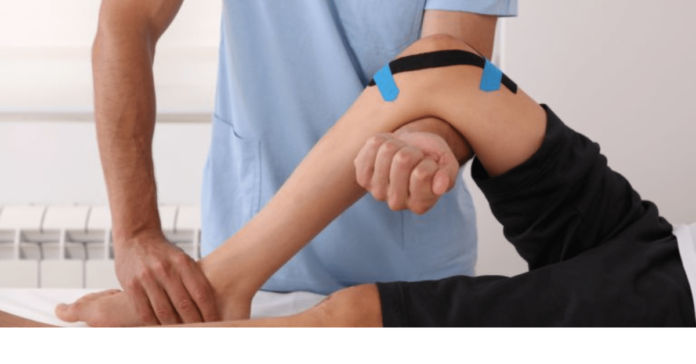Osgood-Schlatter disease is responsible for knee pain in adolescents, especially those who play sport. Osgood-Schlatter disease is common in children who play the sport that involves running, jumping and swift changes of direction like basketball, soccer, ballet and figure skating.
What do we need to know about Osgood-Schlatter disease?
During sporting activities, the thigh muscles (quadriceps) of the child pull on the tendon that connects the kneecap to the growth plate at the top part of the shinbone. This repeated stress can cause the tendon to pull on the growth plate resulting in pain and swelling in the knee. Sometimes the body tries close that gap with new bone growth, which can result in a bony lump at that spot.
.
What are the symptoms of Osgood-Schlatter disease?
- Knee pain in the lower part of the knee
- Swollen and tender joints
- Knee lock
- Hindrance in performing daily essential activities, causing instability
- Pain generally gets worse during certain activities like kneeling, jumping and running, and eases with rest.
- Development of painful lump at the knee joint – the primary sign of Osgood-Schlatter disease
- Recurring flares
What are the risk factors?
- Gender – boys seem to be more prone to Osgood-Schlatter disease though the gender gap is closing now due to girls playing sport as much as boys .
- Sports activity
- Age – Osgood-Schlatter disease affects boys aged between 12 and 14 year old and girls between 10 and 13 years. The age difference is due to the fact that boys and girls hit puberty at different ages and Osgood-Schlatter disease primarily affects pubescent adolescents
- Lack of flexibility of the quadriceps muscles can put excessive strain on the kneecaps increasing pain
How can Osgood-Schlatter disease be prevented?
The most effective preventive measure involves increasing one’s flexibility by quadriceps and hamstring muscle stretching. During growth spurts, shortening of muscles cause pain which can be reduced by stretching. Use of foam for rolling can also help.
Always invest in good-quality, shock-absorbing shoes, designed for specific sports. Padded insole of the shoes is also helpful.
Wearing a knee shield or straps above the shinbone helps prevent bony knob formation on the knee.
When to see a doctor?
Osgood-Schlatter disease is quite rare, but prior diagnosis will kick start early treatment. If a child has chronic knee pain, swelling and redness accompanied by fever, one should immediately consult a doctor.
.
Call 18600-500-1066 to book an appointment.
How is Osgood-Schlatter disease treated?
In general cases, Osgood-Schlatter disease goes away with the passage of growth spurts and puberty. The pain and other symptoms vary from one person to another; it may be mild in some while for others it may be debilitating, hindering daily activities. Treatments primarily include conservative methods as follows:
- Resting and decreasing physical strain
- Icing the painful areas twice or quarterly daily and also after doing physical exercises
- Covering the knee with braces or knee pads
- Consuming over-the-counter drugs like ibuprofen, acetaminophen and other NSAIDs (non-steroidal anti-inflammatory drugs)
- Physiotherapy for hamstrings, quadriceps and other associated knee muscles
- Stretching and muscle strengthening exercises
- Cross-training i.e. replacing straining activities like running and jumping with low-impact activities like walking, biking and swimming
- Children suffering from the disease might have to take a break from sports and allow the joint to rest .
Surgical treatment
In acute cases, pain can persist even after the growth period has stopped. A teenager may have to undergo surgical removal of the hard overgrowth
A physio-therapist can teach your child the exercises to stretch his/her thigh’s quadriceps that can reduce the tension where the patella (kneecap) tendon attaches to the shinbone. Waering a patellar tendon strap can also help relieve the tension. Generally, strengthening exercises for the legs and quadriceps can help stabilize the knee joint.
Conclusion
Osgood-Schlatter disease either heals naturally or with treatment. Most patients recover after attaining full skeletal maturity and one can retain previous athletic activity post recovery.
Frequently Asked Questions (FAQs)
Can permanent damage occur due to Osgood-Schlatter disease?
No. But excess bone growth results in a visible lump formation which can be easily removed surgically.
Does Osgood-Schlatter disease run in the family?
There is no scientific evidence that it is hereditary.
Is yoga helpful in curing Osgood-Schlatter disease?
Yoga indeed helps in rehabilitation of limb flexibility It is best to take the advice from a sports physiotherapist.


















